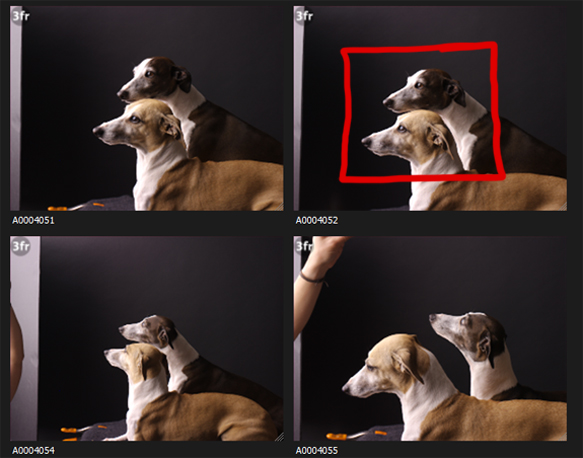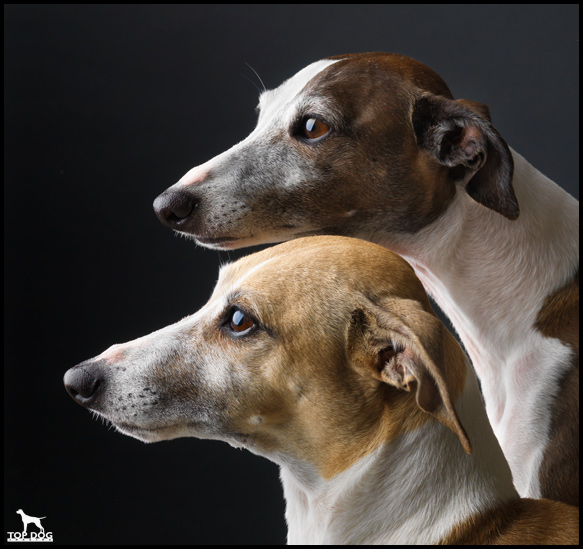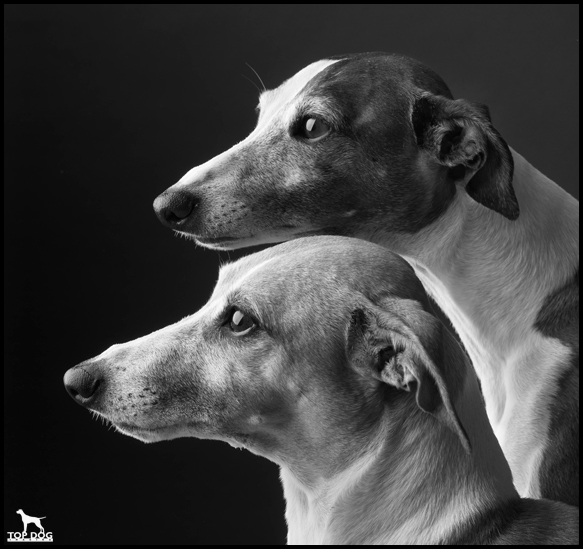Bob Rosinsky guestblog, dog photographer
Some people you meet and you feel right at home, Bob is one of those.
When I visited Florida to film my videos for Kelby I posted online that I would be visiting and who would be interested in a meet and greet and get out for some diner maybe. Bob was one of the first to respond and because he was on the route we decided to visit him on our way to Tampa. We were invited to a nice BBQ and a nice swim and nothing sounded better after the flight. However the time we choose to visit Florida was during a heatwave, rain and thunderstorms so swimming was a no go. We joked that we would that another time.
Bob and I kept in touch and when I was invited to do Photoshop world we of course visited Bob and his family again.
This time the weather was better so we had a great day, he had to kick us out of his house so to say 😀 (yeah that’s a joke there is no end to their hospitality). I absolutely LOVE the way Bob shoots his dogs and I call it dogportraits because he really nails the shot and gives the images something that really bring the dogs to live for me, I asked him to do a guestblog a while ago and am happy to introduce to you guys, one of my dear friends and great dog photographer Bob Rosinsky.
By the way make sure to check out Bob’s blog he recently started at http://topdogimaging.net/blog/
On Dog Photography: A Photo Session
I usually photograph dogs in controlled environments with studio-style strobe lights, neutral-color seamless backgrounds, a computer outfitted with a dual monitor setup, and an assortment of modifiers to control the spread and the contrast of light coming from the strobes. I often shoot with a Sony a850 dSLR. It is a terrific 35mm digital camera, and it is capable of making outstanding images. However, if the client is seeking and is willing to pay for the ultimate in technical and artistic quality, I use a Hasselblad digital medium format camera. Its sensor is twice the size of the Sony’s.
Medium format digital cameras capture a wider tonal range, richer colors, and greater detail per pixel. If the subject is suitable, it is advantageous to work with a camera that has a big sensor mated with high-performance optics. Unfortunately, it requires much more time and patience on the part of the photographer to use such a camera. Medium format is not a good option for say, sports photography. Compared to the Sony, the Hasselblad is unwieldy — harder to focus, slower to operate, and it is impractical to use a zoom lens on it for dog photography. (f/4, typically the fastest aperture on a medium format zoom lens, diminishes the speed and sensitivity of the autofocus mechanism when compared to a prime lens at f/2.8.) The digital files are huge, thus requiring a computer configured with a robust and costly combination of CPU, graphics card, and RAM. Moving so much data around from camera to computer to Photoshop takes much more time than do the files from the Sony.
Whether I use the Hasselblad or the Sony, my shooting tempo is slow and the quantity of pictures relatively sparse. An Italian Greyhound session from a couple weeks ago lasted two and a half hours, during which I shot off nearly fifty frames, which is more than usual. In the studio, I prefer to spend more time interacting with the client and the dogs than I do holding the viewfinder to my eye indiscriminately snapping pictures. To get the quintessential dog picture, one that faithfully captures appearance and personality, requires careful observation and a good working rapport with the dog as well as with the owner/handler.
The objective of this session was to get a great picture of Eo, the dog in the foreground. The other dog, Gracie, is shy and to add to that, a hawk had injured her only a few days earlier. She waited out the session curled up asleep in her crate in the shadows of the studio. When we finished with Eo, we decided, without harboring great expectations, to get both of the dogs to pose together for one picture.
My lens of choice for photographing dogs is the 80mm, which closely replicates what the human eye sees. This lens showed its limitations. When standing less than five feet away from the dogs, the lens did not deliver enough depth-of-field for both of the dogs to be in sharp focus. Remember, the 80mm lens is a fixed prime, not a zoom. Therefore, to correct this I took a few steps back. The added distance between the dogs and me also put them at ease; dogs often walk towards the lens or stress out when a camera infringes on their space.
At a distance of six and a half feet, the dogs were in focus. Only now, they occupied much less space in the frame. Since the final image would need to be a cropped, I made sure that the Italian Greyhounds’ heads landed in the center of the frame. (The way most lenses work, the center of the frame is the sweet spot for sharpness and contrast.) I set the camera at f/13, 1/250th of a second at ISO 100. The lighting setup was simple, just two strobes. One was used to splash a bit of light onto the black background. The other, the main light, was outside the left of the frame facing down at a 45° angle towards the dogs. A big white sheet of foam core off to my right side reflected the main light into the shadows. I had a hunch this picture would work well in either black and white or color.
I took fifteen pictures using this setup. As the client and I looked at the thumbnails on the computer monitor, we agreed that the picture in the upper right captured the mood and the relationship between the dogs. I printed a black and white 8″ X 10″ proof for the client.
Yesterday, I happened to review the RAW files from the session. RAWs are the digital equivalent of negatives in traditional photography. The RAWs display more tonality and depth than the black and white proof that I had printed earlier. After spending a few hours in Photoshop, I came up with two finished versions — one in color and the other in black and white.
I prefer the black and white version. However, the color version works too. What do you think? Please feel free to comment.








I think both versions are great. I prefer the color version because they are beautifully marked. Kudos to the dogs for bringing together a great composition by the way they merge together seamlessly. Great work, this can’t be easy.
Larry
Hi Rob, great photography, although I was particularly taken by your title “Bob Rosinsky guestblog, dog photographer” – the whole thing looks like one big anagram!
Bob,
The pictures are really great. I love the black and white version. Do you own those dogs?
Megan Baker
I prefer the colored one. By the way, how old is are these Greyhounds?